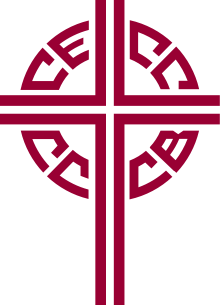Catholic Church in Canada
The Catholic Church in Canada is part of the worldwide Catholic Church, under the spiritual leadership of the Pope. As of 2011, it has the largest number of adherents to a Christian denomination and a religion in Canada, with 38.7% of Canadians (12.81 million) being adherents according to the census in 2011.[4] There are 73 dioceses and about 7,000 priests in Canada.[5] On a normal Sunday, between 15 and 25 per cent of Canada's Catholics attend Mass (15 per cent weekly attenders and another nine per cent monthly).[6]
Catholic Church in Canada | |
|---|---|
| English: Catholic Church in Canada French: Église catholique au Canada | |
| Type | National polity |
| Classification | Catholic |
| Orientation | Christianity |
| Scripture | Bible |
| Theology | Catholic theology |
| Governance | CCCB |
| Pope | Francis |
| President | Lionel Gendron[1] |
| Primate | Gérald Lacroix |
| Apostolic Nuncio | Luigi Bonazzi[2][3] |
| Associations | Canadian Council of Churches |
| Region | Canada |
| Language | English, French, Latin |
| Origin | 16th century New France, French North America |
| Members | 38.7% of Canadians (12,810,705 as of 2011) |
| Official website | www |
History
First Catholics in Canada
Catholicism arrived in the territory later known as Canada in 1000,. with the landing by Leif Ericson (whose mother had converted and brought Catholicism to what became the Diocese of Garðar, Greenland), his sister and at least two brothers, according to the Vinland Sagas. Beginning in 1013, Norway (presumably also intended to include all her colonies, like Orkney, as later under Denmark-Norway), came into personal union with the Kingdom of England, in the rule of Sweyn Forkbeard.
In 1497, when John Cabot landed on the same island of Newfoundland, just on the Avalon Peninsula and nowhere near L'Anse aux Meadows, he raised the Venetian and Papal banners and claimed the land for his sponsor King Henry VII of England, while recognizing the religious authority of the Catholic Church.[7] A letter of John Day states that Cabot landed on 24 June 1497 and "he landed at only one spot of the mainland, near the place where land was first sighted, and they disembarked there with a crucifix and raised banners with the arms of the Holy Father and those of the King of England".[8] In 1608, Samuel de Champlain founded the first Catholic colony in Quebec City.
Missionary work among Indigenous peoples began in the early 1610s as a stipulated condition to the colonization projects of the King of France. Historian Robert Choquette credits secular priest Jessé Fleché as the first to perform dozens of baptisms on Indigenous peoples, which impacted the religious landscape of Mi'kma'ki. Jessé Fleché's ministry was criticized by Jesuits who believed Fleché erred in baptizing neophytes without teaching them the Catholic faith beforehand.[9] In 1611, the Society of Jesus started its missionary work in Acadia. Unlike their predecessor, the Jesuits began their work on Mi'kma'ki by learning the local language and living alongside the Mi'kmaq in order to instruct and convert them to Catholicism.[10]
In 1620, George Calvert, 1st Baron Baltimore purchased a tract of land in Newfoundland from Sir William Vaughan and established a colony, calling it Avalon, after the legendary spot where Christianity was introduced to Britain.[11] In 1627 Calvert brought two Catholic priests to Avalon. This was the first continuous Catholic ministry in British North America. Despite the severe religious conflicts of the period, Calvert secured the right of Catholics to practice their religion unimpeded in Newfoundland, and embraced the novel principle of religious tolerance, which he wrote into the Charter of Avalon and the later Charter of Maryland. The Colony of Avalon was thus the first North American jurisdiction to practice religious tolerance.[12]
British Rule in Canada
In the wake of the Canada Conquest in 1759, New France became a British colony. Nevertheless, the Catholic Church continued to grow in Canada due to the flexibility imposed on the British regime in Canada by the Treaty of Paris (1763) on sovereigns of the United Kingdom who allowed the favour of the protection of Catholicism and French-speaking people in Canada.[13][14] This historical perspective still influences Canadian society today.[15][16]
Anti-Catholicism
Fears of the Catholic Church were quite strong in the 19th century, especially among Presbyterian and other Protestant Irish immigrants across Canada.[17] In 1853, the Gavazzi Riots left 10 dead in Quebec in the wake of Catholic Irish protest against anti-Catholic speeches by ex-monk Alessandro Gavazzi.[18][19]
The major flashpoint was public support for Catholic French language schools. Although the Confederation Agreement of 1867 guaranteed the status of Catholic schools where they had been legalized, disputes erupted in numerous provinces, especially in the Manitoba Schools Question in the 1890s and Ontario in the 1910s.[20] In Ontario, Regulation 17 was a regulation by the Ontario Ministry of Education, that restricted the use of French as a language of instruction to the first two years of schooling. French Canada reacted vehemently and resisted the implementation of the Regulation. This conflict, which was first rooted in linguistic and cultural questions, transformed into a religious divide. In 1915, Ontario clergy was divided between French Canadian and Irish allegiances, with the Irish supporting the position of the provincial government. Pope Benedict XV asked his Canadian representative to study the divide in order to reestablish unity among the Catholic church in the province of Ontario.[21] Regulation 17 is among the reasons why French Canada distanced itself from the war effort, as its young men refused to enlist.[22]
Protestant elements succeeded in blocking the growth of French-language Catholic public schools. The Irish Catholics generally supported the English language position advocated by the Protestants.[23] Despite this, French language education in Ontario continues today in Catholic and public schools.
French versus Irish

The central theme of Catholic history from the 1840s through the 1920s was the contest for control of the church between the French, based in Quebec, and the English-speaking Irish (along with smaller numbers of Catholic Scots, English, and others) based in Ontario.[24] The French Catholics saw Catholics in general as God's chosen people (versus Protestants) and the French as more truly Catholic than any other ethnic group. The fact that the Irish Catholics formed coalition with the anti-French Protestants further infuriated the French.
The Irish Catholics collaborated with Protestants inside Canada, on the school issue: they opposed French language Catholic schools. The Irish had a significant advantage since they were favoured by the Vatican. Irish Catholicism was "ultramontane", which meant its adherents professed total obedience to the Pope. By contrast, the French bishops in Canada kept their distance from the Vatican. In the form of Regulation 17 this became the central issue that finally alienated the French in Quebec from the Canadian Anglophone establishment during the First World War.[25][26] Ontario's Catholics were led by the Irish Bishop Fallon, who united with the Protestants in opposing French schools.[27] Regulation 17 was repealed in 1927.[28][29] The French-speakers remain more liberal than the English-speakers to this day, and in addition are also leaving the faith much more quickly.
One by one, the Irish took control of the church in each province except for Quebec. Tensions were especially high in Manitoba at the end of the 19th century. In Alberta in the 1920s, a new Irish bishop undermined French language Catholic schooling, and removed the Francophile order of teaching sisters.[30]
Newfoundland
In the Dominion of Newfoundland (which was an independent dominion before joining Canada in 1949), politics was polarized around religious lines, with the Protestants confronting the Irish Catholics.[31]
The future Archdiocese of St. John's was established on 30 May 1784 as Catholics in Newfoundland gradually gained religious liberty, made explicit by a public declaration by Governor John Campbell. After a request from Irish merchants in St. John's to Bishop William Egan, Bishop of Waterford and Lismore, James Louis O'Donel was appointed Prefect Apostolic of Newfoundland. This was the first Roman Catholic ecclesiastical jurisdiction established in English-speaking North America.
In 1861, the Protestant governor dismissed the Catholic Liberals from office and the ensuing election was marked by riot and disorder with both the Anglican bishop Edward Feild and Catholic bishop John Thomas Mullock taking partisan stances. The Protestants narrowly elected Hugh Hoyles as the Conservative Prime Minister. Hoyles suddenly reversed his long record of militant Protestant activism and worked to defuse tensions. He shared patronage and power with the Catholics; all jobs and patronage were split between the various religious bodies on a per capita basis. This 'denominational compromise' was further extended to education when all religious schools were put on the basis which the Catholics had enjoyed since the 1840s.[32] Newfoundland's denominational schools were funded by the province until the late 1990s. In the fall of 1998, Newfoundland officially adopted a non-denominational school system, following two referenda and judgements by the Supreme Court of Newfoundland and its Court of Appeal that constitutionally recognized the end of provincially-funded Catholic schools.[33]
Decline
It appears that across Canada the Catholic Church is declining, as society becomes more irreligious, resulting in closures of increasing numbers of churches in all provinces and territories in the country. Identification with Catholicism (as well as to other sects of Christianity) in Canada is also declining. In addition to this phenomenon, new religious communities are being established in relation to newcomers to Canada.[34][35][36]
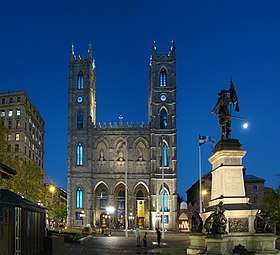
Population
The Catholic population in Canada in 2001[37] and 2011.[38]
| Year | Pop. | ±% |
|---|---|---|
| 1871 | 1,532,471 | — |
| 1881 | 1,791,982 | +16.9% |
| 1891 | 1,992,017 | +11.2% |
| 1901 | 2,229,600 | +11.9% |
| 1911 | 2,833,041 | +27.1% |
| 1921 | 3,389,626 | +19.6% |
| 1931 | 4,102,960 | +21.0% |
| 1941 | 4,806,431 | +17.1% |
| 1951 | 6,069,496 | +26.3% |
| 1961 | 8,342,826 | +37.5% |
| 1971 | 9,974,895 | +19.6% |
| 1981 | 11,210,385 | +12.4% |
| 1991 | 12,203,620 | +8.9% |
| 2001 | 12,936,910 | +6.0% |
| 2011 | 12,810,705 | −1.0% |
| Province | 2001 | 2011 | % Change 2001-2011 |
% 2001 | % 2011 | Δ% Change 2001-2011 |
|---|---|---|---|---|---|---|
| 5,939,715 | 5,766,750 | -2.9% | 83.4% | 74.5% | -8.9% | |
| 3,911,760 | 3,948,975 | +1.0% | 34.7% | 31.2% | -3.5% | |
| 786,360 | 850,355 | +8.1% | 26.7% | 23.8% | -2.9% | |
| 675,320 | 679,310 | +0.6% | 17.5% | 15.0% | -2.5% | |
| 386,050 | 366,000 | -5.2% | 53.6% | 49.7% | -3.9% | |
| 328,700 | 297,655 | -9.4% | 36.6% | 32.8% | -3.8% | |
| 323,690 | 294,495 | -9.0% | 29.3% | 25.0% | -4.3% | |
| 305,390 | 287,190 | -6.0% | 31.7% | 28.5% | -3.2% | |
| 187,440 | 181,550 | -3.1% | 36.9% | 35.8% | -1.1% | |
| 63,265 | 58,880 | -6.9% | 47.4% | 42.9% | -4.5% | |
| 16,990 | 15,755 | -7.2% | 45.8% | 38.7% | -7.1% | |
| 6,215 | 7,580 | +22.0% | 23.3% | 23.9% | +0.6% | |
| 6,015 | 6,095 | +1.3% | 21.1% | 18.3% | -2.8% | |
| 12,936,905 | 12,728,885 | -1.6% | 43.6% | 38.7% | -4.9% |
The Catholic population underwent its first recorded drop between 2001 and 2011. Notable trends include the de-Catholicization of Quebec, a drop in the Catholic population in small provinces with stagnant populations, and a rise in Catholics in the large English-speaking provinces of Ontario, British Columbia, and Alberta. Immigration has not helped prevent the decline in the Catholic population; the only major source of Catholic immigrants to Canada is the Philippines. There are also adherents of Eastern Catholic Churches who had already migrated to Canada, most notably the Ukrainians.
Organization
According to the Canadian Conference of Catholic Bishops, Canada is divided in four Episcopal assemblies: the Atlantic Episcopal Assembly, the Assemblée des évêques catholiques du Québec, the Assembly of Catholic Bishops of Ontario and the Assembly of Western Catholic Bishops.[39] The Pope is represented in Canada by the Apostolic Nunciature in Canada (Ottawa).[40]
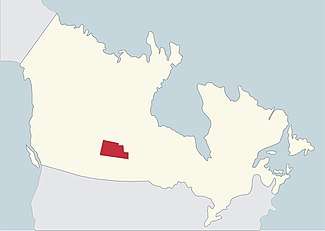
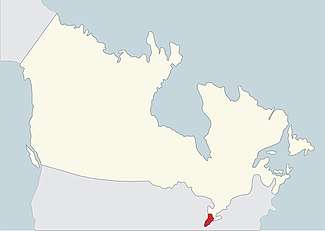
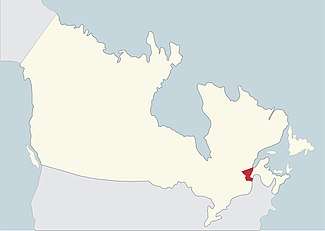
Within Canada, the Latin hierarchy consists of:
- Archdiocese
- Diocese
|
There is a Military Ordinariate of Canada [41] for Canadian military personnel.
The Anglican use of the Latin Church is served from the United States, based in Houston, Texas, by the Personal Ordinariate of the Chair of Saint Peter.
One former Canadian bishopric, the francophone Diocese of Gravelbourg in Saskatchewan, has since its suppression in 1998 become a titular episcopal see, which may be bestowed on any Latin bishop without proper diocese, working in the Roman Curia or anywhere in the world.
Eastern dioceses
There is a Ukrainian Greek Catholic (Byzantine Rite) province, headed by the Metropolitan Archeparchy of Winnipeg, which has four suffragan eparchies (dioceses):
- Ukrainian Catholic Eparchy of Edmonton
- Ukrainian Catholic Eparchy of New Westminster
- Ukrainian Catholic Eparchy of Saskatoon
- Ukrainian Catholic Eparchy of Toronto and Eastern Canada in Toronto.
Coptic Catholic Churches in Canada 1) Notre dame D'Egypt in Laval- Quebec 2)Holy family Coptic Catholic church in Toronto - Ontario
There are 4 other eparchies and 2 exarchates in Canada:
- also Byzantine rite:
- (Greek-)Melkite Eparchy of Saint-Sauveur de Montréal, immediately subject to the Melkite Patriarch of Antioch
- Slovak Catholic Eparchy of Saints Cyril and Methodius of Toronto, directly subject to the Metropolitan sui juris of Prešov
- Antiochian Rite: Maronite Eparchy of Saint-Maron de Montréal, immediately subject to the Maronite Patriarch of Antioch
- Chaldean Rite: Chaldean Catholic Eparchy of Mar Addai of Toronto, directly dependent on the Patriarch of Babylon
- Syrian Catholic Apostolic Exarchate for Canada (directly dependent on the Holy See)
- Syro-Malabar Catholic Apostolic Exarchate of Canada (directly dependent on the Holy See)
A few Eastern particular church communities are pastorally served from the United States:
- Armenian Rite: Armenian Catholic Eparchy of Our Lady of Nareg in New York, directly subject to the Patriarch of Cilicia
- Byzantine: Romanian Catholic Eparchy of St George's in Canton, bishopric for the diaspora in North America (including Canada), with cathedral see in Canton, Ohio
Canadian Catholic personalities
.jpg)
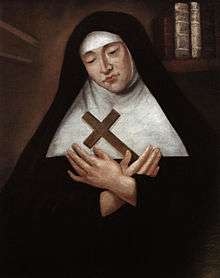
Patron Saint of Canada
Saint Joseph is Patron Saint of Canada.[42][43]
Notable Canadian Catholics
- John Candy (Ontario)[44]
- Jim Carrey (Ontario)[45]
- Wilfrid Laurier (Quebec) [46]
- Paul Martin (Quebec)[47]
- Pierre Trudeau (Quebec)[48]
Saints
- François de Laval
- Frère André
- Kateri Tekakwitha
- Marguerite Bourgeoys
- Marguerite D'Youville
- Marie de l'Incarnation
- Canadian Martyrs
Blessed
- Vasyl Velychkovsky[49]
- Catherine de Saint-Augustin
- Dina Bélanger
- Émilie Tavernier Gamelin
- Frédéric Janssoone
- Louis-Zéphirin Moreau
- Nykyta Budka[50]
- Marie-Élisabeth Turgeon
- Marie-Léonie Paradis
- Marie-Rose Durocher
- Vital-Justin Grandin
Venerables
- Alfred Pampalon
- Élisabeth Bergeron
- Délia Tétreault
See also
Further reading
- Bramadat, Paul, and David Seljak, eds. Christianity and Ethnicity in Canada (2008)
- Clarke, Brian P. Piety and Nationalism: Lay Voluntary Associations and the Creation of an Irish catholic Community in Toronto, 1850-1895 (McGill-Queen's University Press, 1993)
- Fay, Terence J. A History of Canadian Catholics: Gallicanism, Romanism, and Canadianism (2002) excerpt and text search
- Gardaz, Michel. "Religious studies in Francophone Canada." Religion 41#1 (2011): 53–70.
- Huel, Raymond. Archbishop A-A Tache of St. Boniface: The "Good Fight" and the Illusive Vision (University of Alberta Press, 2003).
- Jaenen, Cornelius J. The Role of the Church in New France (McGraw-Hill Ryerson, 1976)
- Johnston, Angus Anthony. A History of the Catholic Church in Eastern Nova Scotia; Volume I: 1611- 1827 (1960)
- Johnston, A.B.J. Life and Religion at Louisbourg, 1713-1758 (MGill-Queen's University Press, 1996)
- Lahey, Raymond J. The First Thousand Years: A Brief History of the Catholic Church in Canada (2002)
- Laverdure, Paul. "Achille Delaere and the Origins of the Ukrainian Catholic Church in Western Canada." Historical Papers' (2004). online
- McGowan, Mark. Michael Power: The Struggle to Build the Catholic Church on the Canadian Frontier (McGill-Queen's Press-MQUP, 2005)
- McGowan, Mark G. ""Pregnant with Perils": Canadian Catholicism and Its Relation to the Catholic Churches of Newfoundland, 1840–1949." Newfoundland and Labrador Studies 28.2 (2013). online
- McGowan, Mark G. "Rendering Unto Caesar: Catholics, the State, and the Idea of a Christian Canada." Historical Papers (2011). online
- McGowan, Mark George and Brian P. Clarke, eds. Catholics at the Gathering Place: Historical Essays on the Archdiocese of Toronto, 1841-1991 (Dundurn, 1993)
- McGowan, Mark George. "Rethinking Catholic-Protestant Relations in Canada: The Episcopal Reports of 1900-1901." Canadian Catholic Historical Assoc., (1992) online
- McGowan, Mark G. "A Short History of Catholic Schools in Ontario." online
- McGowan, Mark G. "Rendering Unto Caesar: Catholics, the State, and the Idea of a Christian Canada." Historical Papers (2011). online
- McGowan, Mark G. "The Maritimes Region and the Building of a Canadian Church: The Case of the Diocese of Antigonish after confederation." Canadian Catholic Historical Association (2004): 46–67. online
- Morice, A G. History Of The Catholic Church In Western Canada: From Lake Superior To The Pacific (1659–1895) (2 vol; reprint Nabu Press, 2010)
- Murphy, Terrence, and Gerald Stortz, eds, Creed and Culture: The Place of English-Speaking Catholics in Canadian Society, 1750 – 1930 (1993), articles by scholars
- Pearson, Timothy G. Becoming Holy in Early Canada (McGill-Queen's Press-MQUP, 2014.)
- Perin, Roberto. Rome in Canada: the Vatican and Canadian affairs in the late Victorian age (U of Toronto Press, 1990)
- Trofimenkoff, Susan Mann. The Dream of Nation: A Social and Intellectual History of Quebec (1982). passim, esp pp 115–31
References
- https://www.catholicregister.org/item/26083-gendron-elected-president-of-canadian-conference-of-catholic-bishops
- "Francis appoints Archbishop Luigi Bonazzi as Apostolic Nuncio to Canada". LaStampa.it. Retrieved 20 August 2017.
- "Rinunce e Nomine, 18.12.2013" (Press release) (in Italian). Holy See Press Office. 18 December 2013. Retrieved 23 June 2019.
- Statistics Canada (2011). "2011 National Household Survey: Data tables - Religion".
- "Current Dioceses in Canada including statistical information on priests 2010-2016". Retrieved 29 May 2018.
- "Mass attendance in Canada more than doubles on Christmas Day, survey finds". 20 December 2016.
- P D'Epiro, M.D. Pinkowish, "Sprezzatura: 50 ways Italian genius shaped the world" pp. 179–180
- "The John Day Letter". heritage.nf.ca. Retrieved 14 May 2018.
- Choquette, Robert. Canada's Religions: An Historical Introduction. Ottawa: University of Ottawa Press (2004) p.63
- Choquette, Robert. Canada's Religions: An Historical Introduction. Ottawa: University of Ottawa Press (2004) p.74
- George Calvert and Cecilius Calvert: Barons Baltimore of Baltimore. New York: Dodd, Mead, and Company. 1890. Retrieved 23 January 2013.
- "Sir George Calvert and the Colony of Avalon". heritage.nf.ca. Retrieved 23 January 2013.
- "Catholicism". The Canadian Encyclopedia. Retrieved 7 October 2019.
- https://www.youtube.com/watch?v=vk6KBIoZf4A
- "Why is Canada the most tolerant country in the world? Luck".
- "Multiculturalism". The Canadian Encyclopedia. Retrieved 7 October 2019.
- J. R. Miller, "Anti-Catholic Thought in Victorian Canada" in Canadian Historical Review 65, no.4. (December 1985), p. 474+
- Bernard Aspinwall, "Rev. Alessandro Gavazzi (1808–1889) and Scottish Identity: A Chapter in Nineteenth Century Anti-Catholicism." Recusant History 28#1 (2006): 129-152
- Dan Horner, "Contesting Authority in the Aftermath of Montreal's Gavazzi Riot." Histoire sociale/social history 44.1 (2011): 29-52.
- Margaret Prang, "Clerics, Politicians, and the Bilingual Schools Issue in Ontario, 1910–1917." Canadian Historical Review 41.4 (1960): 281-307.
- Bock, Michel. L'Ontario français, Des Pays-d'en-Haut à nos jours. Ottawa: Centre franco-ontarien de ressources pédagogiques, (2010) p.147.
- Robert Craig Brown, and Ramsay Cook, Canada, 1896-1921: A nation transformed (1974) pp 253-62
- Jack Cecillon, "Turbulent Times in the Diocese of London: Bishop Fallon and the French-Language Controversy, 1910–18". Ontario History (1995) 87#4 pp: 369–395.
- Terence Fay, A History of Canadian Catholics (2002)
- Gordon L. Heath (2014). Canadian Churches and the First World War. Wipf and Stock Publishers. pp. 82–83. ISBN 9781630872908.
- Robert Choquette, Language and religion: a history of English-French conflict in Ontario (Univ of Ottawa Press, 1975).
- Cecillon, Jack (December 1995). "Turbulent Times in the Diocese of London: Bishop Fallon and the French-Language Controversy, 1910–18". Ontario History. 87 (4): 369–395.
- Barber, Marilyn (September 1966). "The Ontario Bilingual Schools Issue: Sources of Conflict". Canadian Historical Review. 47 (3): 227–248. doi:10.3138/chr-047-03-02.
- Jack D. Cecillon, Prayers, Petitions, and Protests: The Catholic Church and the Ontario Schools Crisis in the Windsor Border Region, 1910-1928 (2013)
- Henry Wostenberg, "Language Controversy in the Red Deer Catholic Parish, 1924-1932" Alberta History (2013) 61#4 online
- John P. Greene (2001). Between Damnation and Starvation: Priests and Merchants in Newfoundland Politics, 1745-1855. McGill-Queen's Press. pp. 236–38. ISBN 9780773521957.
- Frederick Jones, "HOYLES, Sir HUGH WILLIAM," in Dictionary of Canadian Biography vol. 11, University of Toronto/Université Laval, 2003–, accessed May 25, 2015. http://www.biographi.ca/en/bio/hoyles_hugh_william_11E.html.
- The Collapse of Denominational Education" in Heritage Newfoundland & Labrador by Jenny Higgins, 2011. –, accessed May 29, 2018. https://www.heritage.nf.ca/articles/society/collapse-denominational-education.php
- "What's happening to Canadian churches?".
- "9 Catholic churches in Saint John diocese to shut doors | CBC News".
- "Cash-strapped Catholic churches in Quebec closing, selling artifacts amid tough fight for survival".
- Statistics Canada (2001). "Population by religion, by province and territory (2001 Census)".
- Statistics Canada (2011). "2011 National Household Survey: Data tables".
- "Dioceses of Canada - Canadian Conference of Catholic Bishops". cccb.ca. Retrieved 15 May 2018.
- "Nonciature Apostolique Au Canada".
- "Home - Roman Catholic Military Ordinariate of Canada".
- "Saint Joseph, Patron Saint of Canada and the Universal Church | Standard Times Press".
- "A Prayer to St. Joseph for the Conversion of Canada".
- "Catholic celebrities".
- "Catholic Celebrities".
- "From 'Bible Bill' to Stephen Harper, the evolution of faith-based politics | CBC News".
- "Faith in Canada: Former Prime Minister Paul Martin discusses how religion influences leadership - Toronto | Globalnews.ca". 16 June 2017.
- "From 'Bible Bill' to Stephen Harper, the evolution of faith-based politics | CBC News".
- "Bienheureux Vasyl Velychkovsky, CSSR".
- "Bienheureux Nicétas Budka".
External links
- Canadian Conference of Catholic Bishops
- Observatory of religious freedom - Presentation of the religious situation in Canada
- Catholicsm, The Canadian Encyclopedia
- Assembly of Catholic Bishops of Ontario
- Assembly of Catholic Bishops of Quebec
- Military Ordinariate of Canada
- GigaCatholic
- Apostolic Nunciature in Canada
| Wikimedia Commons has media related to Catholic Church in Canada. |
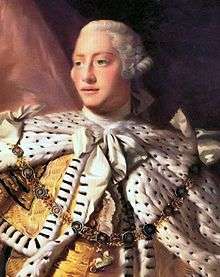
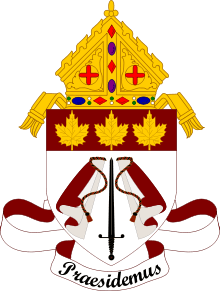

.jpg)
